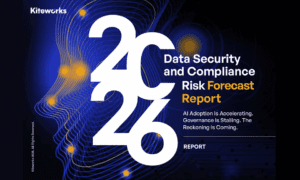In today’s digital-first world, network security is not a luxury—it’s a necessity. Whether you’re a startup or an established enterprise, the ever-evolving cyber threat landscape means businesses must be proactive rather than reactive. One of the most strategic and effective ways to maintain tight network security is by leveraging Managed IT Services.
These services go beyond just fixing computers or resetting passwords. They create a robust, ongoing support system that constantly monitors, analyzes, and defends your IT infrastructure. From 24/7 threat detection to firewall optimization, Managed IT Services provide the critical backbone that modern businesses need to stay secure in the digital age.
So, how exactly do these services strengthen your network security? Let’s dig into the details.
Understanding the Cybersecurity Challenges Facing Businesses Today
Before diving into how Managed IT Services make a difference, it’s important to understand the threats companies face every day.
Phishing attacks, ransomware, malware, data breaches, and social engineering tactics are increasingly sophisticated. Cybercriminals are no longer operating alone; they are part of organized digital crime rings targeting vulnerabilities in small and large companies alike.
And the problem isn’t always external. Insider threats—whether from disgruntled employees or unintentional mistakes—can cause just as much damage. In this kind of environment, standard antivirus software and firewalls just don’t cut it anymore.
Why Managed IT Services Are Essential for Network Security
So, what role do Managed IT Services play in all of this? A big one.
These services offer continuous monitoring, advanced analytics, and timely updates—all managed by experts who specialize in keeping networks protected from known and emerging threats. One of the main benefits is that everything is handled proactively. That means patches are installed before vulnerabilities are exploited, and threats are neutralized before they cause damage.
By partnering with a team that knows how to interpret threat intelligence and implement preventive strategies, businesses can drastically reduce their risk of cyberattacks.
IT Help Desk Support: The First Line of Defense
One of the most underestimated areas of cybersecurity is the IT Help Desk Support. Yes, it’s the team that answers your tech support tickets and fixes login issues, but it’s also much more than that.
Help desk support is often the first to identify suspicious activity—whether it’s a user unable to access a file, slow system performance, or unfamiliar logins. A well-trained IT help desk acts like a sensor, picking up early warning signs and escalating issues before they escalate into full-blown breaches.
Additionally, they educate employees on best practices, from spotting phishing emails to understanding proper password hygiene. When end-users are equipped with the right knowledge, your network becomes that much more secure.
Proactive Monitoring and Rapid Threat Response
The hallmark of effective Managed IT Services is around-the-clock monitoring. Unlike internal IT teams who may only work during business hours, managed services providers offer 24/7 coverage.
This constant vigilance means that if a threat is detected at 3 a.m. on a Sunday, it can be dealt with immediately—before any damage is done. These services also use advanced threat detection tools, like intrusion detection systems (IDS), behavioral analytics, and machine learning algorithms to flag unusual behavior and stop attacks in real time.
In a nutshell, your security net is always on and always evolving.
Strategic Updates and Patch Management
Outdated software is one of the easiest entry points for hackers. Unfortunately, many businesses struggle to keep up with regular patches and updates. That’s where Managed IT Services come in.
Part of their job is ensuring every system, application, and device is up-to-date with the latest security patches. They don’t just install updates—they assess them for compatibility, roll them out strategically, and ensure nothing breaks in the process. This seamless management keeps your network secure without disrupting daily operations.
The Mid-Game Advantage: IT Help Desk Services
Another key component that adds significant value to network security is IT Help Desk Services. While similar in name to IT support, these services go deeper by offering ticket tracking, performance reporting, and user feedback systems.
Why does this matter for security?
Because better visibility into recurring issues allows businesses to identify patterns—such as consistent login failures or access from unusual IP addresses. These may be signs of brute-force attacks, compromised credentials, or other security concerns. Help desk services can also prioritize and escalate security-related tickets faster, ensuring urgent matters don’t get lost in the shuffle.
Having a knowledgeable, process-driven IT help desk service can be the bridge between incident detection and resolution.
Endpoint Protection for a Mobile Workforce
With remote work becoming more common, employees are logging into company systems from laptops, tablets, and mobile phones—all outside the traditional office firewall. This expands the attack surface significantly.
Managed IT Services address this issue by deploying comprehensive endpoint protection tools across all devices. These solutions include antivirus, device encryption, remote wiping capabilities, and geofencing—ensuring that if a device is lost or stolen, your company data stays safe.
It’s all about managing risk wherever your employees go.
Regular Security Audits and Compliance Management
Another area where Managed IT Services shine is in security auditing and compliance management.
Regulations like GDPR, HIPAA, and PCI-DSS demand strict data protection protocols. Failing to comply can lead to heavy penalties, reputational damage, and even legal issues.
Managed service providers ensure your systems are in line with current compliance standards. They conduct regular security audits, risk assessments, and provide documentation that proves your adherence to regulations. It’s not just about staying safe—it’s about staying compliant too.
Employee Education and Training
Cybersecurity isn’t just a tech issue—it’s a people issue too. One click on a phishing email or a weak password can open the door to an attack.
That’s why many Managed IT Services offer security awareness training for employees. These sessions cover real-world scenarios, teaching staff how to recognize suspicious activity and respond appropriately. From simulated phishing attacks to password management workshops, these programs empower your team to become active participants in your security posture.
And an educated workforce is one of the strongest firewalls you can have.
Scalable Security for Growing Businesses
As your business grows, so do your cybersecurity needs. What worked for a 10-person office won’t suffice for a 100-person company. Managed IT Services are built to scale with your business.
They adapt to your growth, adding new users, updating access controls, and increasing monitoring as your infrastructure expands. This flexibility means you won’t outgrow your security setup—and you’ll always stay protected.
Real-Time Reporting and Transparency
Transparency is a major plus when working with Managed IT Services. Many providers offer dashboards and real-time reports that give you visibility into your network’s health and security.
You’ll know when threats are detected, when patches are applied, and how issues are resolved. This kind of insight helps you make informed decisions and shows stakeholders or board members that you’re serious about cybersecurity.
Planning for the Unexpected: Backup and Disaster Recovery
Even with the best defenses in place, things can go wrong. That’s why disaster recovery is a critical part of any network security strategy.
Managed IT providers implement robust backup solutions that protect your data in the event of a ransomware attack, natural disaster, or system failure. These backups are often stored offsite or in the cloud and are tested regularly to ensure they work when you need them most.
Quick recovery isn’t just a convenience—it can mean the difference between staying in business or shutting down.
Final Thoughts: The True Power of Managed IT Services
At the end of the day, cybersecurity isn’t a one-and-done project—it’s an ongoing process. Threats evolve. Technology changes. Regulations shift. That’s why businesses need a security strategy that’s both dynamic and reliable.
Managed IT Services offer exactly that.
By delivering 24/7 monitoring, proactive threat detection, real-time support, employee training, endpoint protection, and scalable solutions, these services create a protective shell around your entire digital infrastructure. They don’t just solve problems—they prevent them.
So if your goal is to maintain a strong security posture while focusing on what your business does best, now’s the time to consider bringing managed services into your IT ecosystem.
With the right partner, you’ll have peace of mind knowing your systems, data, and people are all secure—and that’s something every modern business can benefit from.
Read More From Techbullion



































